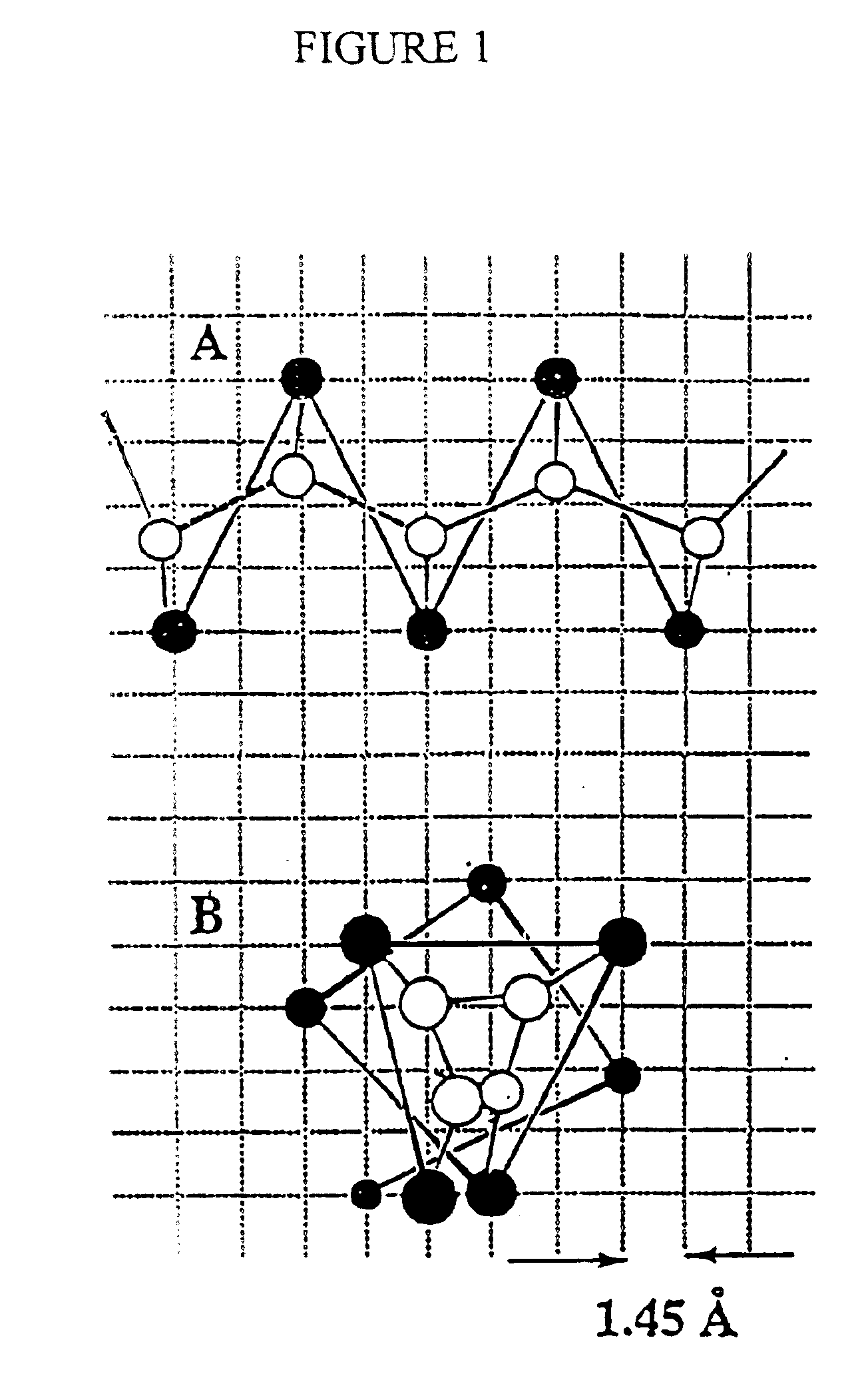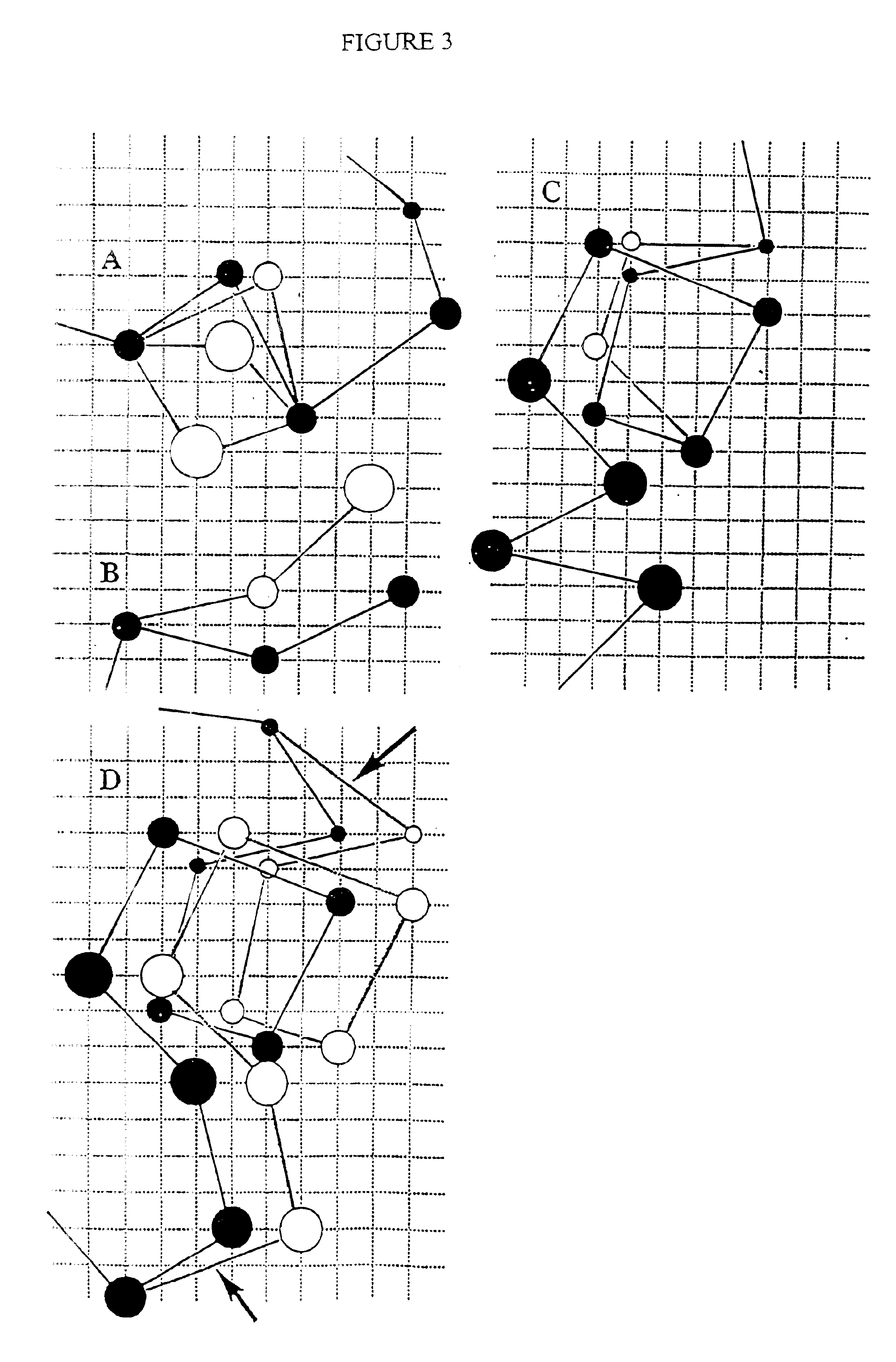Protein modeling tools
a technology of protein and tool, applied in the field of protein modeling tools, can solve the problems of large amount of nucleotide sequence information, lack of corresponding information about genes and protein structure or function, and inability to provide functional information about the protein or its corresponding gene in and of itself, and achieves simple representation, computational efficiency, and simple structure.
- Summary
- Abstract
- Description
- Claims
- Application Information
AI Technical Summary
Benefits of technology
Problems solved by technology
Method used
Image
Examples
example 1
[0182] SICHO-Mediated Folding of 8 Representative Proteins
[0183] The test set employed in this work is representative of single domain water-soluble proteins.sup.40 and consists of the following proteins that were previously studied.sup.6 in the CAPLUS model: the small structured protein fragment of 6 pti, chosen for comparison with the work of Smith-Brown et al., the all-.alpha. protein myoglobin (1 mbs), the .alpha. / .beta. motifs of protein G, thioredoxin, flavodoxin, and an all-.beta. protein, 1 pcy. In addition, the folding of a 247-residue TIM barrel, Atim, and the .beta.-protein 4 fab was also examined. The set of constraints used in these studies have been reported previously,.sup.6 but only in those cases where the studied protein is the same. When a smaller number of constraints are used, they were randomly chosen from the larger constraint set. For the two proteins not studied previously, the set of long-range constraints employed appears in Tables II and III, below. The s...
example 2
Excluding Example 2
[0337] 1. Friesner, R. A., Gunn, J. R., Computational studies of protein folding. Annu. Rev. Biophys, Biomol, Struct. 25:315-342, 1996.
[0338] 2. Levitt, M., Protein folding. Curr. Opin. Struct. Biol. 1:224-229, 1991.
[0339] 3. Anfinsen, C. B., Scheraga, H. A., Experimental and theoretical aspects of protein folding. Adv. Protein Chem. 29:205-300, 1975.
[0340] 4. Smith-Brown, M. J., Kominos, D., Levy, R. M., Global folding of proteins using a limited number of distance restraints. Protein Eng. 6:605-614, 1993.
[0341] 5. Skolnick, J., Kolinski, Al, Ortiz, A. R., MONSSTER: A method for folding globular proteins with a small number of distance restraints. J. Mol. Biol. 265:217-241, 1997.
[0342] 7. Kaptein, R., Boelena, R., Scheek, R. M., van Gunsteren, W. F., Protein structures from MNR. Biochemistry 27:5389-5395, 1988.
[0343] 8. Gronenborn, A. M., Clore, G. M., Where is NMR taking us? Proteins 19:273-276, 1994.
[0344] 9. Braun, W., Go, N. Calculation of protein conformatio...
PUM
| Property | Measurement | Unit |
|---|---|---|
| distances | aaaaa | aaaaa |
| distances | aaaaa | aaaaa |
| distances | aaaaa | aaaaa |
Abstract
Description
Claims
Application Information
 Login to View More
Login to View More - R&D
- Intellectual Property
- Life Sciences
- Materials
- Tech Scout
- Unparalleled Data Quality
- Higher Quality Content
- 60% Fewer Hallucinations
Browse by: Latest US Patents, China's latest patents, Technical Efficacy Thesaurus, Application Domain, Technology Topic, Popular Technical Reports.
© 2025 PatSnap. All rights reserved.Legal|Privacy policy|Modern Slavery Act Transparency Statement|Sitemap|About US| Contact US: help@patsnap.com



